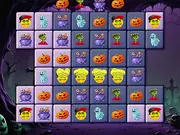Spot the Unique Halloween
Spill i fullskjerm
Spilldetaljer
Here are some methods you may find useful in creating your own CSS stylesheet. These methods will allow you to generate styling dynamically, apply classes with conditions, and define rules based on screen size or orientation. The `@media` rule is a powerful tool to create responsive designs. It enables you to apply different styles to your pages depending on a variety of media features, such as screen width, device orientation, and resolution. Here's a basic example: ```css @media screen and (max-width: 600px) { body { background-color: lightblue; } } ``` This code snippet changes the `background-color` of the `body` to `lightblue` when the screen width is 600 pixels or less. You can add as many `@media` rules as you need to cover various screen sizes and device types. Another approach to dynamically apply styles is by using JavaScript to add or remove classes based on certain conditions. For instance, you might want to add a `.dark-mode` class to the `body` element if the user prefers a dark theme. ```javascript const userPrefersDark = window.matchMedia && window.matchMedia('(prefers-color-scheme: dark)').matches; if (userPrefersDark) { document.body.classList.add('dark-mode'); } ``` In this JavaScript code, `window.matchMedia('(prefers-color-scheme: dark)')` checks if the user's system prefers a dark color scheme. If it does, the `dark-mode` class is added to the `body`, allowing you to define specific styles for dark mode in your CSS: ```css body.dark-mode { background-color: #333; color: #eee; } ``` For more complex dynamic styling, CSS variables (also known as custom properties) can be incredibly useful. They allow you to define variables in CSS and reuse them throughout your stylesheet. You can also update these variables with JavaScript, effectively changing multiple styles at once. ```css :root { --primary-color: blue; --font-size: 16px; } button { background-color: var(--primary-color); font-size: var(--font-size); } ``` And to change them with JavaScript: ```javascript document.documentElement.style.setProperty('--primary-color', 'red'); document.documentElement.style.setProperty('--font-size', '18px'); ``` This snippet changes the primary color to red and the font size to 18px for all elements that use these CSS variables. This method provides a centralized way to manage your design tokens and allows for easy theming and dynamic updates. By combining `@media` queries, JavaScript class manipulation, and CSS variables, you can create highly flexible and responsive stylesheets that adapt to various user preferences and device conditions.
Kommentarer





















